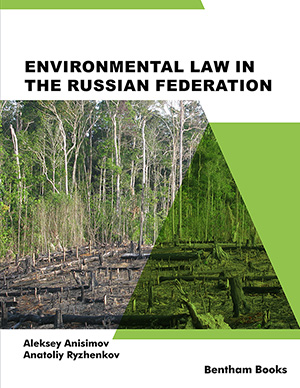Abstract
The authors suppose that legal liability for environmental offenses is
understood as a legal relationship between the state represented by specially authorized
authorities and the party that has committed an environmental offense (an individual,
an official or a legal entity) and is obliged to undergo state coercion measures in the
forms of particular forfeitures (of a person, property or organizational nature) for the
violation of rules of environmental legislation.
An environmental offense is a ground and the time of the commencement of legal
relations of legal liability; it is a guilty wrongful act entailing legal liability and
prohibited by environmental legal rules of the Russian Federation and constituent
entities of the Russian Federation; it infringes on the constitutional right of everyone to
a favorable environment and also causes harm to the natural environment (its objects
and components) or poses a real threat of this harm. An environmental offense (like
any other offense) includes four elements: the object, the objective aspect, the subject
and the subjective aspect. For the classification of an offense as environmental, the
object of the encroachment at the time of its commitment must be in the system of
ecological relationships with the environment. Liability for environmental offenses
performs a range of functions: stimulating (compliance with rules of environmental
legislation),preventive (making it possible to prevent new offenses), compensatory
(aimed at compensating for harm to the environment, the life, health and property of
people) and punitive (punishment of offenders). The authors raise a question about the
number of types of legal liability for environmental offenses.
The Federal Law “On Environmental Protection” itself mentions four types of liability
in Article 75: property, disciplinary, administrative, and criminal liability. Having
analyzed the scientific doctrine and practice, the authors state that environmental
offenses entail civil legal, administrative and criminal liability. Criminal and civil legal
liability are regulated only by federal acts. Suppose a person is brought to
administrative or criminal liability; in that case, he or she may also have to compensate
for the harm caused to the environment. However, it is impossible to bring anyone to
both administrative and criminal liability. Particular attention is paid to the issues of
compensation for environmental harm, which is taken as negative changes in the
quality of the environment that are caused by economic or other human activities
involving the destruction of ecological relationships, pollution, and destruction of
certain natural components and can result in harm to the life, health or property of
citizens (property of legal entities)
Keywords: Accumulated harm, Action limitation, Causal relationships, Consequences, Environmental harm, Harm to human health, Industrial safety, Methods, Non-pecuniary damage, Nuclear energy, Object, Objective aspect, Payments, Rates, Responsibility, Set of offense elements, Source of increased danger, Subject, Subjective aspect, Sufferings.













